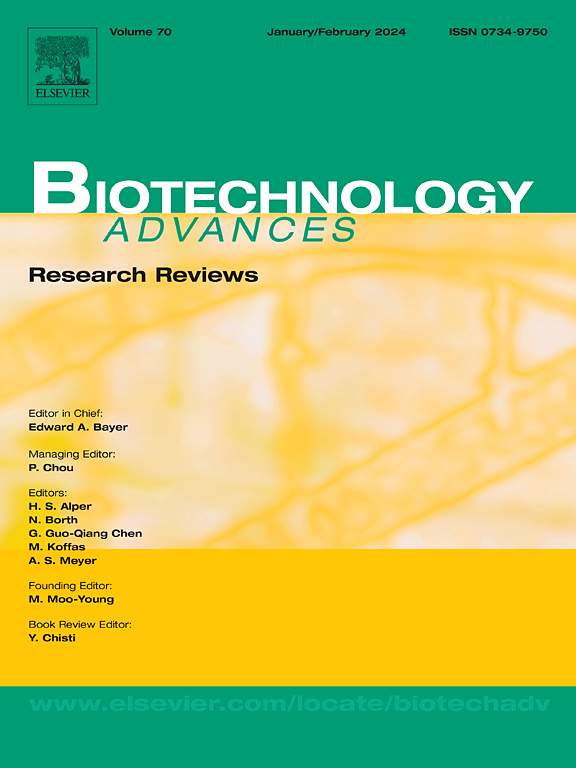Microbial electrosynthesis technology for CO2 mitigation, biomethane production, and ex-situ biogas upgrading
IF 12.1
1区 工程技术
Q1 BIOTECHNOLOGY & APPLIED MICROBIOLOGY
引用次数: 0
Abstract
Currently, global annual CO2 emissions from fossil fuel consumption are extremely high, surpassing tens of billions of tons, yet our capacity to capture and utilize CO2 remains below a small fraction of the amount generated. Microbial electrosynthesis (MES) systems, an integration of microbial metabolism with electrochemistry, have emerged as a highly efficient and promising bio-based carbon-capture-and-utilization technology over other conventional techniques. MES is a unique technology for lowering the atmospheric CO2 as well as CO2 in the biogas, and also simultaneously convert them to renewable bioenergy, such as biomethane. As such, MES techniques could be applied for biogas upgrading to generate high purity biomethane, which has the potential to meet natural gas standards. This article offers a detailed overview and assessment of the latest advancements in MES for biomethane production and biogas upgrading, in terms of selecting optimal methane production pathways and associated electron transfer processes, different electrode materials and types, inoculum sources and microbial communities, ion-exchange membrane, externally applied energy level, operating temperature and pH, mode of operation, CO2 delivery method, selection of inorganic carbon source and its concentration, start-up time, and system pressure. It also highlights the current MES challenges associated with upscaling, design and configuration, long-term stability, energy demand, techno-economics, achieving net negative carbon emission, and other operational issues. Moreover, we provide a summary of current and future opportunities to integrate MES with other unique biosystems, such as methanotrophic bioreactors, and incorporate quorum sensing, 3D printing, and machine learning to further develop MES as a better biomethane-producer and biogas upgrading technique.
用于二氧化碳减排、生物甲烷生产和沼气异地提纯的微生物电合成技术。
目前,全球每年因消耗化石燃料而产生的二氧化碳排放量极高,已超过数百亿吨,但我们捕获和利用二氧化碳的能力却仍然只占产生量的一小部分。微生物电合成(MES)系统是微生物新陈代谢与电化学的结合,与其他传统技术相比,它是一种高效且前景广阔的生物碳捕获和利用技术。MES 是一种独特的技术,可降低大气中的二氧化碳和沼气中的二氧化碳,并同时将其转化为可再生生物能源,如生物甲烷。因此,MES 技术可用于沼气提纯,生成高纯度的生物甲烷,有望达到天然气标准。本文从选择最佳甲烷生产途径和相关电子传递过程、不同电极材料和类型、接种物来源和微生物群落、离子交换膜、外部应用能级、操作温度和 pH 值、操作模式、二氧化碳输送方法、无机碳源及其浓度的选择、启动时间和系统压力等方面,详细概述和评估了用于生物甲烷生产和沼气升级的 MES 的最新进展。本报告还强调了当前 MES 在升级、设计和配置、长期稳定性、能源需求、技术经济学、实现净负碳排放以及其他操作问题方面所面临的挑战。此外,我们还总结了当前和未来将 MES 与甲烷营养生物反应器等其他独特生物系统集成的机会,并结合了法定量传感、3D 打印和机器学习,以进一步将 MES 发展成为更好的生物甲烷生产商和沼气升级技术。
本文章由计算机程序翻译,如有差异,请以英文原文为准。
求助全文
约1分钟内获得全文
求助全文
来源期刊

Biotechnology advances
工程技术-生物工程与应用微生物
CiteScore
25.50
自引率
2.50%
发文量
167
审稿时长
37 days
期刊介绍:
Biotechnology Advances is a comprehensive review journal that covers all aspects of the multidisciplinary field of biotechnology. The journal focuses on biotechnology principles and their applications in various industries, agriculture, medicine, environmental concerns, and regulatory issues. It publishes authoritative articles that highlight current developments and future trends in the field of biotechnology. The journal invites submissions of manuscripts that are relevant and appropriate. It targets a wide audience, including scientists, engineers, students, instructors, researchers, practitioners, managers, governments, and other stakeholders in the field. Additionally, special issues are published based on selected presentations from recent relevant conferences in collaboration with the organizations hosting those conferences.
 求助内容:
求助内容: 应助结果提醒方式:
应助结果提醒方式:


